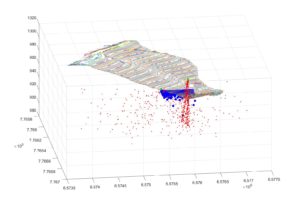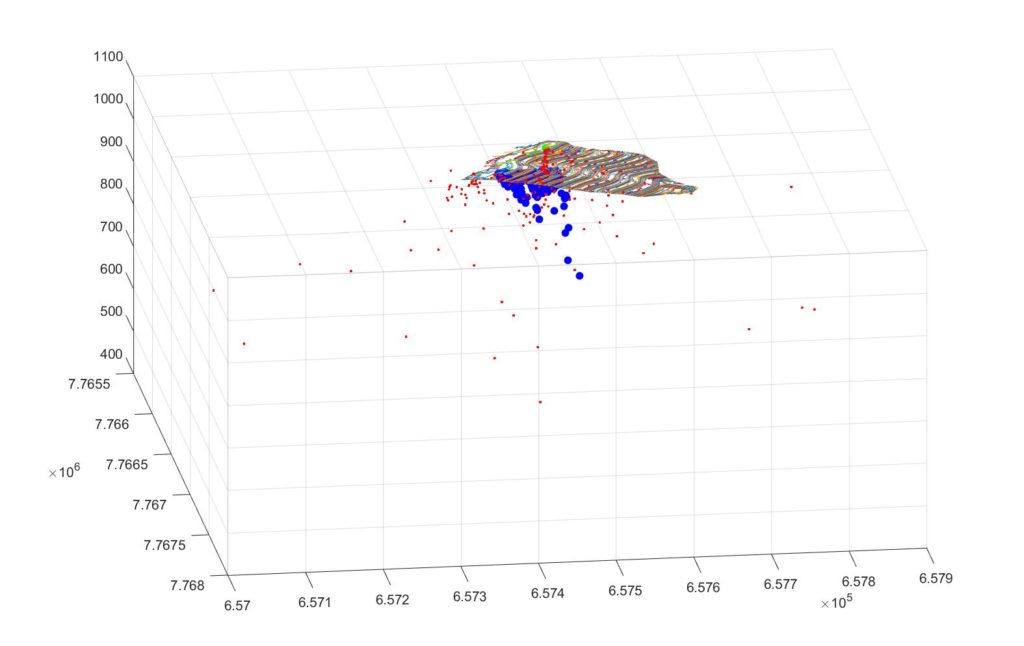The industry desperately needs more reliable and accurate sensors and technology solutions for tailings dams, not just general plans to do things better under existing codes of practice. Before this years Brumadinho disaster at Vale’s Córrego do Feijão iron ore mine in Brazil, on November 5, 2015, the Samarco Fundão tailings dam collapsed, releasing over 32 Mm3 of tailings into Fundão River, a tributary of Rio Doce River, overtopping Santarém Dam, and causing what at the time before the latest incident was considered to be Brazil’s worst ever environmental accident. Since this failure, new and sophisticated technologies have been used to allow for real-time monitoring of tailings storage facilities, in order to increase safety on these structures.
One of the most troublesome causes of dam failures is internal erosion due to uncontrolled flow of water. This can cause distress to an embankment dam, and most embankments exhibit some seepage. However, this seepage must be controlled in velocity and quantity. Seepage occurs through the earthen embankment or dike and/or through its foundation. Seepage, if uncontrolled, can erode fine soil material from the downstream slope or foundation, and continue moving towards the upstream slope to form a pipe or cavity to the pond or lake, often leading to a complete failure of the embankment. Such a failure is usually referred to as internal erosion or “piping.” Silt and fine sands – as is usually the case in iron ore tailings – are most prone to piping, because they erode easily.
SureWave Technology Ltd, a privately owned UK company, has developed a “unique” micro seismic technology able to disregard the environmental and man-made “signals” to detect the release of energy from strata under stress. Liquid movement that generates micro seismic ”waves” can also be detected. This can be utilised to monitor a structure or area for stress and/or movement of material and liquid.
The system is a new application of a unique technology predominantly used to monitor mine stability. The success in monitoring the build-up of stress during mine operations is invaluable, if advanced notice to a structural failure can be given. By analysis of the source mechanics calculated by the system from the micro seismic events, it can be demonstrated that stress within the structure is releasing seismic energy at a microscopic level. This technique has been used to forewarn of structural failure: in one example some 18 weeks warning was able to be given. The benefits of this are clear in protecting life, assets and the opportunity for the mine owners to take preventative measures to prevent the failure.
SureWave Technology with the assistance of Samarco and Fundação Gorceix, both from Minas Gerais, Brazil, initially set up a mine monitor (Model MM2Tri) six channel, at the top of Germano Dam, within Samarco site. Data was recorded from 7 December 2016. The system has solar power and a 3G ‘dongle’ modem connected to the internet. The cables enable the sensors to be placed 300 m apart across the dam wall. The system was moved to the second step from the bottom on the 7 February 2017. During this time, significant site activity prevented collection of meaningful data. This included a hammer drill rig working up the dam for several weeks. There was also some mobile network outages, and initial solar power issues. Between these issues, good data was collected with micro seismic events clearly evident both from the dam and the water reservoir.
The Germano Pit Tailings Storage Facility was chosen as the ideal TSF for the tests to be performed. It is a 60 m high upstream dam designed so as to rehabilitate the old iron ore pit. It is used for the disposal of iron ore coarse tailings; typically sand or silt tailings that present high permeability and allow free draining of the TSF. The TSF was built with a 5 m high compacted laterite starter dyke, and subsequent 5 m high raisings, until it reached its current 60 m height. Its drainage system is made up of a draining blanket that was built underneath the TSF starter dyke. Samarco required information on any movements within the dam structure, as well as tracking any moving liquid around the dam wall. The location of any moving water was of paramount interest.
The system rapidly started to detect and plot micro seismic events from the first day of installation. The locations were an uncertain factor, as the sand/silt nature of the dam creates a different velocity model for the system. In addition, the automatic process of ”picking” the P and S waves (or body and surface waves) needed significant and time-consuming changes. This work was undertaken between December 2016 and June 2017. Also, it was important to make the system universal, as it must be capable of being deployed at any such dam without further user adjustment or application changes (beyond loading a new site image and such like).
“These requirements for a universal system have been achieved. Seismic events and moving liquid were clearly identified, and their locations plotted on a 3D site image. The system also creates a CSV file for further analysis if required. The site velocity model is loaded from a simple text file. However, the exact event distance, calculated from the Primary (P wave) and Surface (‘S’ or Love / Rayleigh) wave time of arrival difference relies on the exact automatic detection of the start of these waves. In this application, the first arrival of these waves is very difficult to detect, and depends on the amount of liquification of the material. In this regard, the S wave will not travel through liquid, and instead we get surface waves. These have a different velocity. The movements detected were plotted according to the source characteristics.”
Material movement is plotted in red, whereas other (non-P & S) wave is in blue and is assumed to be liquid. The typical seismic movements recorded from between December 2016 and February 2017 are as shown in the main image above. The area of the water movement – shown in blue, is approximately 250 m wide (across the dam), and extends into the water reservoir some 350 m. The main area for seismic activity shown as red is a line extending into the water reservoir some 150 m.
It should be noted that these locations were uncertain, and prior to the changes discussed above. Typical data recorded after the changes, and also after the system, was relocated to the second step from the bottom of the tailing dam, as shown in the image below.

“The body of liquid movement is of the same area and size as before. Note it is to one side of the dam. This happens due to the fact that the old mine pit has a natural body of water closer to the right abutment of the dam – this was, in fact, one of the reasons Germano Pit was chosen for the tests in the first place, to check if the monitoring system would be accurate enough to detect this peculiarity. Some of the red seismic events are due to random activity outside of the dam (trucks and the like) and should be ignored as should any single events not forming a line or cluster.”
There appear to be two seismic lines running from near sensor ‘B’, and this needs some further investigation, to establish the true nature of the event. For these dams, it would be proposed to monitor with three sensors to enable a triangulation of event location to be 100% accurate. This is a technique already deployed in Australia for monitoring large open pit walls.
“For future installations, it is recommended that a minimum of three sensors are deployed to confirm and improve the location accuracy. The location of water to the dam wall would then be able to be accurately measured and displayed. The addition of the third sensor will allow tri-angulation of the source of the events. This technique does not require accurate wave detection of primary and secondary (or surface waves) time of arrival differences. This will resolve any remaining uncertainty about the locations.”
“For information, this technique was deployed in Australia where drilling confirmed the event locations provided by the SureWave system (aquifer with moving water near a side wall). It is strongly recommended that the dam is monitored permanently. The system is setup and able to be observed daily via the remote connection and visually checked for any changes or significant events. It should also be established if the seismic activity within the Germano Dam is typical of these types of dams.”
This article is based on a paper by Breno Castilho of Norsk Hydro Brasil, Samuel Carneiro of Samarco Mineração and Philip Shaw of SureWave Technology











